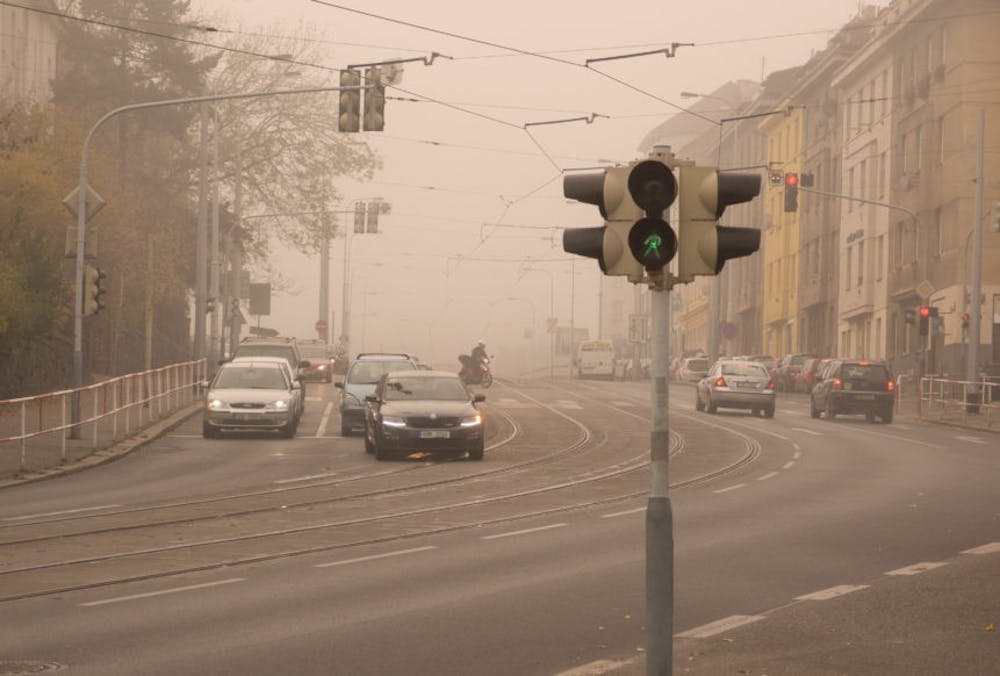
Over winter break, I went to India. I mainly stayed in Mumbai for around three weeks. My family and I wanted to visit the Taj Mahal, but the concerns regarding the dangerous pollution there deterred our plans. However, the pollution problem is still bad in Mumbai. The air is hazy from sunrise to sunset, and the evening sun is darkened by smog.
Being outside gave me a headache. I can’t imagine how the pollution must be affecting the people who live there every day. The last time we went to India was three years ago, and the pollution then was not as severe as it is now. As my uncle drove us around, he explained some legislative changes to address pollution, yet we all recognized that it was far from resolved. This made me question how India’s pollution problem got so bad in the first place.
Emissions are a huge part of the issue. In the context of climate change, emissions refer to greenhouse gases released into the air. Although there are many different sources of emissions, the Environmental Protection Agency lists the six main sources as coming from transportation; electricity production; industry (e.g. production of some raw materials); commercial and residential purposes; agriculture; and land use and forestry.
The air in India is filled with soot, dust, ozone and sulfur oxides. According to the World Health Organization, 11 out of the 12 cities with the worst pollution are in India, with the exception of one city being in Cambodia. This is based off of measurements of small particulates in the air.
Small particulates are particles that have a diameter lower than 2.5 microns, and are an object of concern because they have harmful effects on your health. The smaller particles are more dangerous because of their ability to penetrate farther into the lungs than other larger particles in the air. These smaller particles can come from open flames or diesel exhaust.
In India most cars use diesel. This is a huge problem, considering that it just increases the number of small particulates in the air. Traffic reflects the pollution problem as well. Bay Area traffic is bad, but India’s traffic is impossible to navigate. Not even ambulances are able to go through easily. The high number of cars is one of the biggest contributors to pollution.
For a visitor, the effects of pollution may be bearable for the duration of a short trip. However, the effects of pollution will be much worse for those who are exposed to it for long periods of time. Pollution can lead to many health problems, such as cancer and respiratory diseases.
Other sources of pollution include burning fields to clear them, random burnings on the side of the road and gas stoves. According to Bruce Nilles, a managing director at the anti-fossil fuel nonprofit Rocky Mountain Institute, burning gas is a bigger contributor to pollution than burning coal. Gas stoves release pollutants like nitrogen dioxide and carbon monoxide, toxic for human health and the environment.
The local government of Delhi called a public health emergency for the city because of the horrible state of the air there. According to Time, breathing Delhi air for a day affects the health as much as smoking 25 or more cigarettes. On one record day, the air quality index (AQI) of New Delhi was recorded at the highest score 999, when normal air quality should be between zero and 50. This leads me to think about what can be done to reduce pollution. There is currently a ban in the neighboring states of New Delhi on crop burning, and another program that only allows cars with odd-number license plates to drive on odd days and vice versa for even-number license plates.
Veerabhadran Ramanathan, a professor of Climate Studies at the University of California, San Diego, collaborated with the California Air Resources Board and the The Energy and Resources Institute in India to create the India-California Air Pollution Mitigation Program. This program came up with 12 recommendations for how to manage climate change. As mentioned before, gas stoves are a large contributor to the pollution problem. According to Ramanathan, one third of India’s pollution would be cut if they replaced dirty cooking stoves with clean ones.
In all honesty, it is much easier to come up with solutions for problems than to actually implement them. However, small steps to combat pollution need to happen, not only for the safety of the planet but also for the safety of the people.





